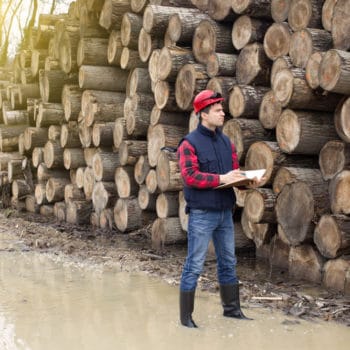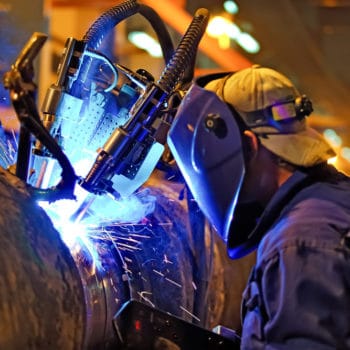Why We Love It
-
$98,150Potential Avg. Salary
-
3.9%Job Growth Rate
-
Growing DemandJob Outlook
-
Get to TravelCareer Attribute
Wind Energy Engineers are in charge of creating, building and tracking the performance of wind turbines on wind turbine farms. You are responsible for maximizing the use of alternative energy sources combining a love for the environment, science and math.
Recommended Schools
What is a Wind Energy Engineer?
Duties
The primary job duties of an experienced wind energy engineer involve the below duties:
- Participate in and provide support for safety protocols and environmental monitoring systems, to ensure that such considerations are assessed in wind energy projects.
- Oversee the performance of various equipment and review the causes behind system malfunctions, reliability and conduct system walk downs.
- Pay attention to site improvement efforts through economic assessment, evaluation of bids, tackle budget expenses, and manage external contractors.
- Conduct an overview of damages to wind power systems on account of natural weather conditions.
- Constantly track the operations of the wind farm, by collecting and assessing information that is stored by the wind turbines.
Day In The Life
As a wind energy engineer, you will spend your day working on wind farm installations and creating efficient layouts for such farms. Through scientific analysis, you will enhance the functionality of surrounding infrastructure like streets and transmission routes. It is your job to observe existing facilities and provide clear recommendations on how best to update operations.
In addition, depending on your work specialization, you may be checking the performance of rotor blades, energy production systems, hardware design turbines, etc. Related to this, you are also responsible for creating budget plans and decide on optimal manufacturing practices. To excel at this part of the work, you need to have superior skills in computer aided design and electrical systems to ensure peak performance of installed turbines.
Work Schedule And Typical Hours
In this type of role, you will be working out of research laboratories, industrial plants and private office spaces. The work environment varies based on your specialization. For instance, if you are a materials engineer, you will be spending the majority of your work hours in the laboratory, while manufacturing engineers need to be overseeing smooth operations at factories. Commuting between home and the wind project installation site is quite common. To network with other professionals and turbine manufacturers, you may have to travel internationally and nationally to offices in other locations.
Growth Of The Job
The demand for green jobs is continually rising, so interested applicants in this field can look forward to promising jobs after completing their program. As per the US Bureau of Labor Statistics, you will see a job growth of 4% in the 2014 to 2024 decade. Those candidates who are particularly interested by the specifics of wind energy production could also explore career possibilities as a wind energy analyst.
Typical Employers
Wind energy engineers are usually hired by enterprises that work on alternate energy solutions and have an environmental focus. This includes the government laboratories, colleges and universities, research organizations and private companies.
Recommended Schools
How To Become a Wind Energy Engineer
Wind energy professionals need to at least hold a bachelor’s degree in subjects such as Electrical engineering, energy engineering, and mechanical engineering, from an ABET-accredited program. For more senior roles, you will likely need a graduate degree, while some even require a doctorates. More and more academic institutions are providing specialized degree programs for environmental engineering.
Like any industry, having the right experience is a big plus for the renewable sector. You can start early by taking part in an internship with a well-known organization, or joining a cooperative program at the undergraduate level. Further, fieldwork is quite common for early professionals to gain the credentials they require for working full-tie with wind turbine manufacturing companies. Since continuous learning is encouraged, wind energy engineers have to regularly engage in on the job training to update their skills.
Since much of the work revolves around data collection, you need to be an expert at compiling and organization information that is relevant, while spotting any gaps in the data. Research and reviewing skills are a must to analyse the information collected in an efficient way. Another part of the role includes closely assessing the performance of different types of equipment on the wind far, which is only possible with a solid foundation in wind mechanics. Training on computer applications for statistical analysis software, word and excel to monitor wind technology components will come in handy.
Wind Energy Engineer Salary Data
We’ve provided you the following to learn more about this career. The salary and growth data on this page comes from recently published Bureau of Labor Statistics data while the recommendations and editorial content are based on our research.
National Anual Salary
Low Range
$70,960Average
$98,150High Range
$150,830National Hourly Wage
Low Range
$34/hrAverage
$47/hrHigh Range
$73/hrHow do Wind Energy Engineer salaries stack up to other jobs across the country? Based on the latest jobs data nationwide, Wind Energy Engineer's can make an average annual salary of $98,150, or $47 per hour. On the lower end, they can make $70,960 or $34 per hour, perhaps when just starting out or based on the state you live in.
Salary Rankings And Facts
#71 Nationally for All Careers
Above Average Salary Nationally
Programs and Degrees
Here are the most common degrees for becoming a Wind Energy Engineer. a is usually recommended and specifically a degree or coursework that prepares you for the particular field, see below.
Highest Education Among Wind Energy Engineers
- 7.3% Doctorate
- 28% Masters
- 48.1% Bachelors
- 6.7% Associates
- 7.6% College
- 2.2% High School
- 0.2% Less than High School
Job Growth Projections and Forecast
2014 Total Jobs
136,9002024 Est. Jobs
142,300Job Growth Rate
3.9%Est. New Jobs
5,400How does Wind Energy Engineer job growth stack up to other jobs across the country? By 2024, there will be a change of 5,400 jobs for a total of 142,300 people employed in the career nationwide. This is a 3.9% change in growth over the next ten years, giving the career a growth rate nationwide of Above Average.
Growth Rankings And Facts
#482 Nationally for All Careers
Above Avg. Growth Nationally
What Companies Employ The Most Wind Energy Engineers
| Industry | Current Jobs | New Jobs Needed | % Increase |
|---|---|---|---|
| Federal government, excluding postal service | 28,900 | -2,800 | -3% |
| Engineering services | 12,200 | 1,400 | 1% |
| Research and development in the physical, engineering, and life sciences | 8,900 | 2,900 | 3% |













